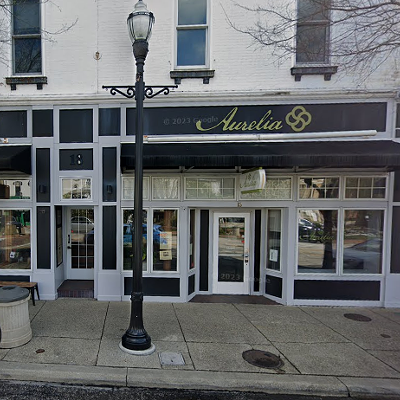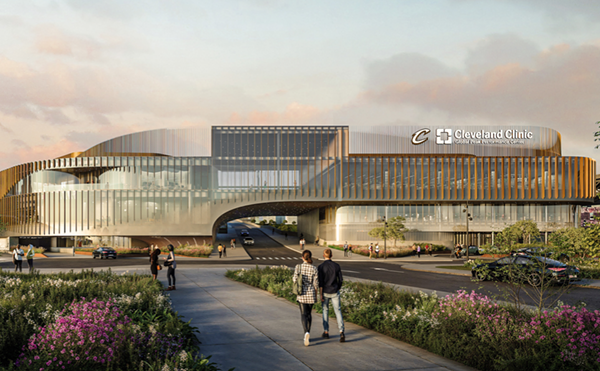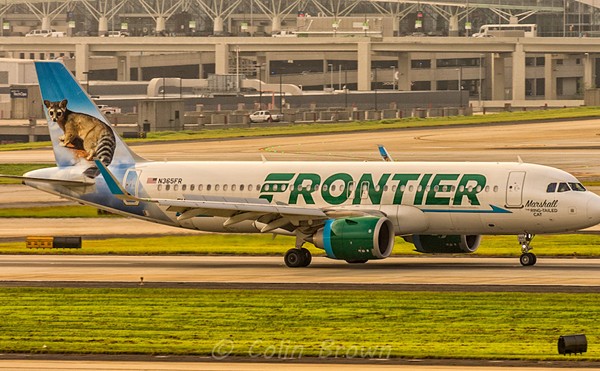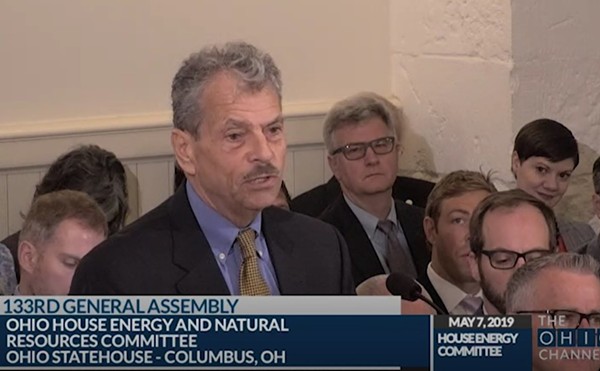East 66th Street is a jagged little thing. Reaching northward from Chester Avenue, the roadway is mountainous and untame. There are a lot of plastic bottles dancing along the sidewalk today, but not too many baseballs. Not too many well worn gloves dangling off front porch steps, either.
The street leads toward a grassy lot. If you weren't looking for it, you might not see it. The mostly time-wracked brickwork blends in with the rest of the neighborhood's architecture.
It doesn't look like much.
There are a lot of ghosts wandering the grounds. Babe Ruth hit his 500th home run here in 1929. Cy Young threw the park's first pitch when it opened in 1891. The Cleveland Indians won the 1920 World Series in League Park. These days, no part of that last sentence even makes sense, so far in the dusty rearview are those memories.
But for several decades running now, Cleveland leaders and residents have touted the grand notion of restoring League Park to its former glory. That lofty sentiment may very well be happening now.
The park is bookended by East 66th and East 70th streets. The stalwart Lexington Avenue runs along its southern edge, and Linwood Avenue, a scant, one-way street, brings up the northern portion. Within the thoroughfare picture frame rests an empty block of frozen earth and browned, stubbly grass. The dirt, muted and gray, bears no resemblance to what was once a heavy-handed infield. This dirt is not the dirt that Babe Ruth once graced.
So little remains of the past.
Specifically, the old ticket house and an original brick wall running along East 66th are the only structural nods to history here. Nearly every window - every pane of decades-old glass - is shattered. A quick peek beyond the empty frames reveals little; sunshine hasn't touched the ticket takers' stands for years.
But photographs abound of the way things used to be. The stadium was a monolithic testament to our country's national pastime. And further testaments seem to illuminate the horizon.
This proposition comes up every five years or so. "League Park! How about it?" Even as far back as 1979, not too long after the original stadium was demolished, developers were seen scouting the property for signs of future baseball-themed profits.
City Architecture is behind the $6.3-million plans. That money will be released via the city's general-obligation bond proceeds and Ohio Cultural Facilities and ward allocation funds.
Groundbreaking took place Oct. 27 last year. "People will come to Cleveland," Mayor Frank Jackson said at the time, evoking, perhaps unintentionally, James Earl Jones' soliloquy toward the end of Field of Dreams. City leaders are banking on League Park acting as a destination totem for the near east side.
The entire project is estimated to be completed by September.
In action, the plans revolve around a complete facelift for the park. With vast landscape improvements set for the entire park, the big news is that a delicately manicured baseball diamond will fill the void left by the stadium's demolition so many years ago. An additional acre of land tacked onto the plans will include a second, smaller diamond on the eastern half of the block.
A visitor's center-cum-museum is also at the heart of the vision. The Baseball Heritage Museum, holed up in the Old Arcade presently, may move its base to the new park.
The skeleton of the park's former glory stands tall among the neighborhood's homes. Aside from this portal into history, the neighborhood is lacking any variety of venues for outdoor activities. Bringing League Park back to some semblance of something vibrant is Hough's best option for the future. At least, that's the bet being placed on the table right now.
While the city's move is certainly an ode to the majesty of the past, it's also mainly a one-off, massive investment in a neighborhood that needs any kind of life it can get.
In 1951, much of the stadium was razed, leaving little more than a shell of the past. That same year, a woman named Fannie Lewis and her family moved into a little house on Star Avenue, just a coupla twists and turns down the road from the demolished structure.
With an eventual five children under her roof, those early years were looking good. But restlessness abounded in the area. The Hough Riots in 1966 shone a devastating spotlight on how far south Hough had gone since the days of The Great Bambino and his - Pow! Look at that! - 500th home run. The riots and the whole of the civil rights movement were both the consequence and catalyst of decades of disrepair for the neighborhood.
Lewis became a prominent fixture in Hough. The scene outside her front door galvanized her spirit and sculpted a future of action, righteousness and awareness. She earned a seat on Cleveland City Council in 1980 and served her ward for nearly 30 years. League Park was a constant in her conversations will fellow legislators and fellow residents. It was, in her mind and the minds of many others, at least one key ingredient in the revitalization of Hough and the rest of Cleveland.
"I'm not questioning whether it will. I know it will. It's just a matter of finally putting this all together," Lewis once told an MLB writer who was inquiring into the park's past, present and future. She knew something had to give. The money was there. The demand was there. Fannie Lewis was there.
A walk across the frozen dust and detritus of League Park today reveals an intersection in time.
Hough, which wraps its rather cold arms around the park property, has a history that merges the skyward trajectory of baseball, Baseball, BASEBALL! with the civil rights movement and the well worn wall of prejudice and overlooked dreams.
"I'll get my rest when the Lord is done with me here," Lewis told Scene about a year before she died. But certainly she knows that even now ain't the time to rest.
Opening Day at the corner of East 9th Street and Carnegie Avenue is next week. The fervor across Northeast Ohio and all of the U.S. is abundant and exciting.
The corner of East 66th Street and Lexington Avenue tells a different story, still. But signs of life are stirring among the shattered glass and the dust and the dirt. They say this whole park is gonna be something real special come September. They say Hough is comin' back.













